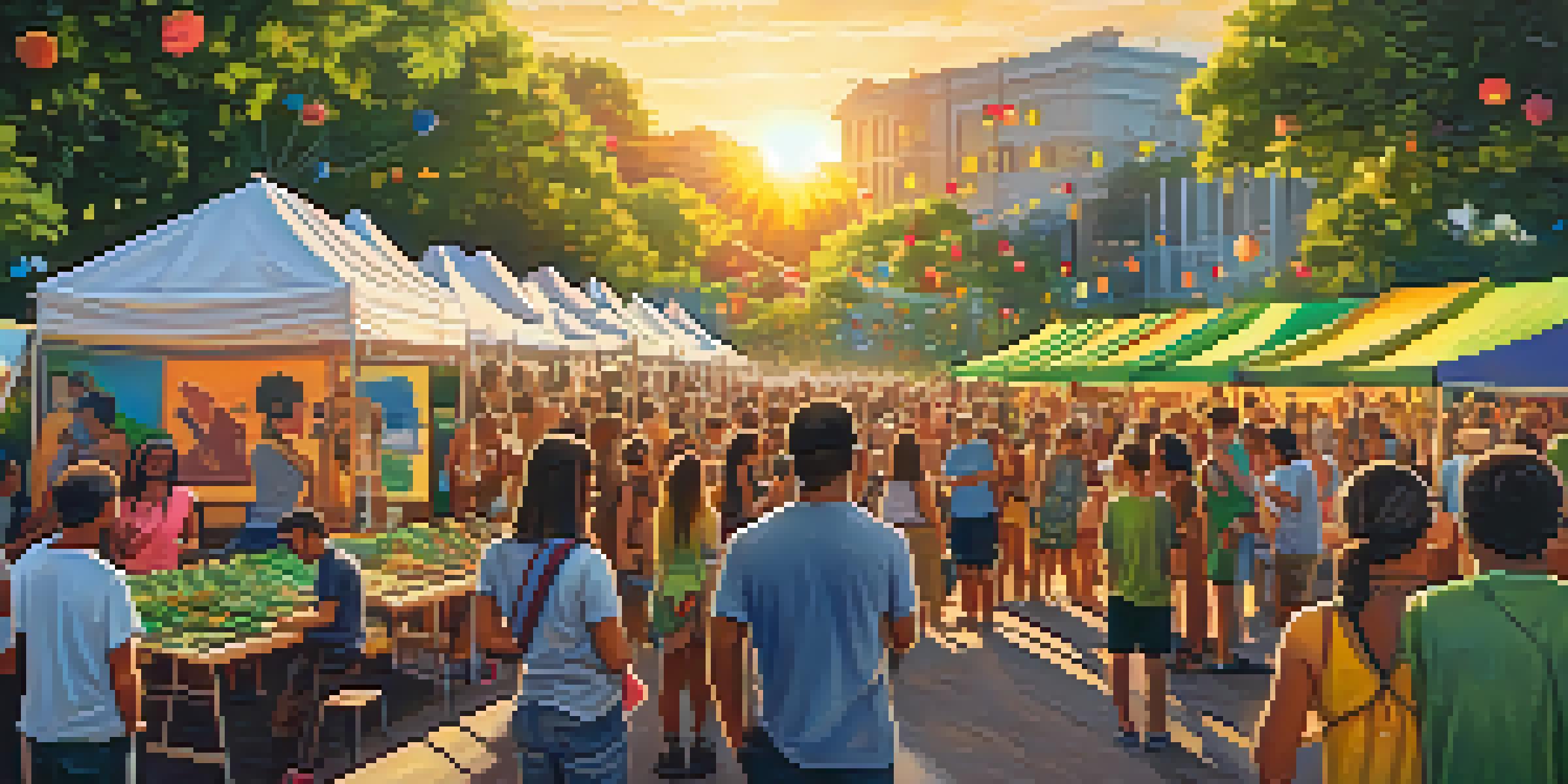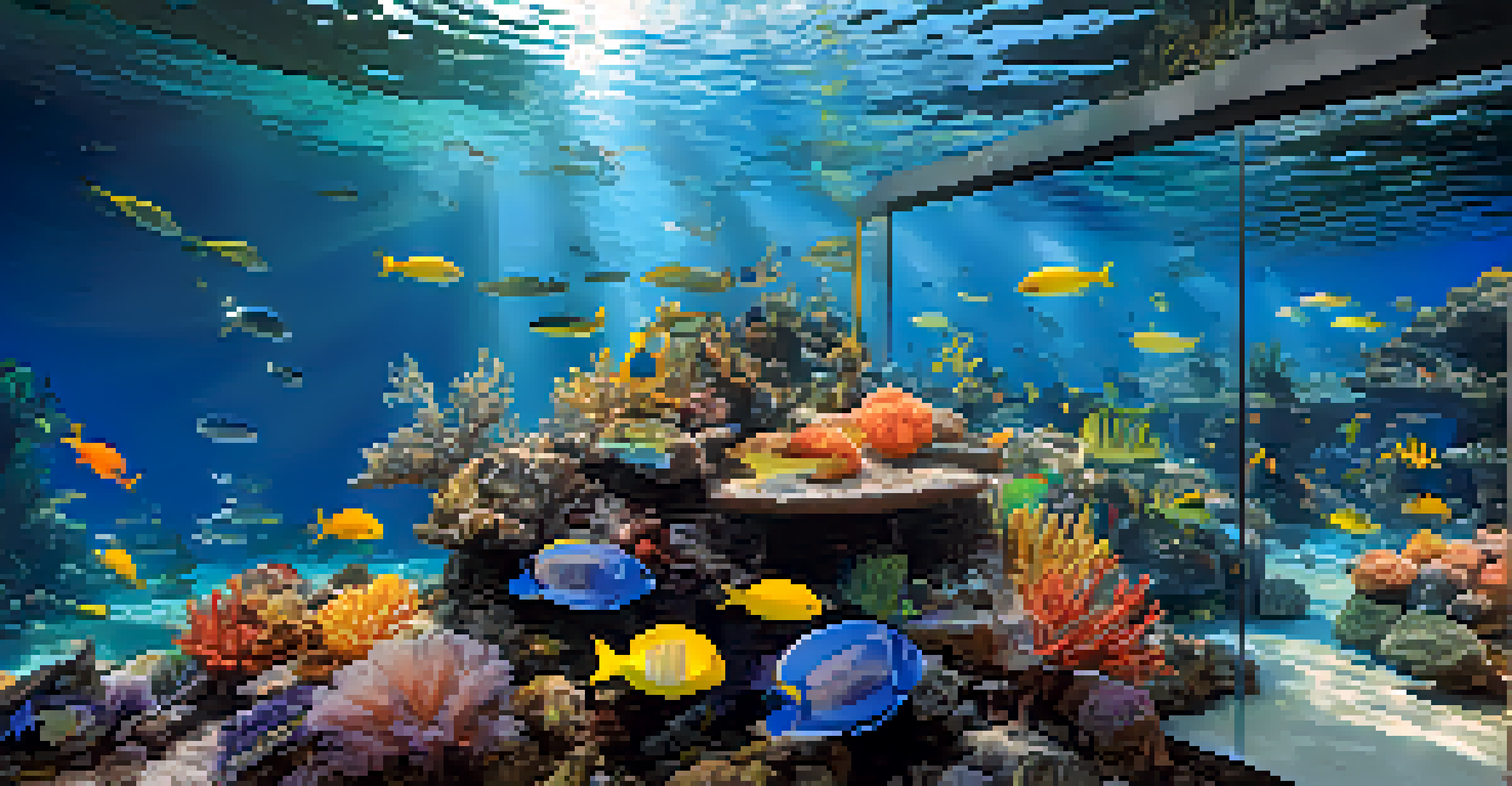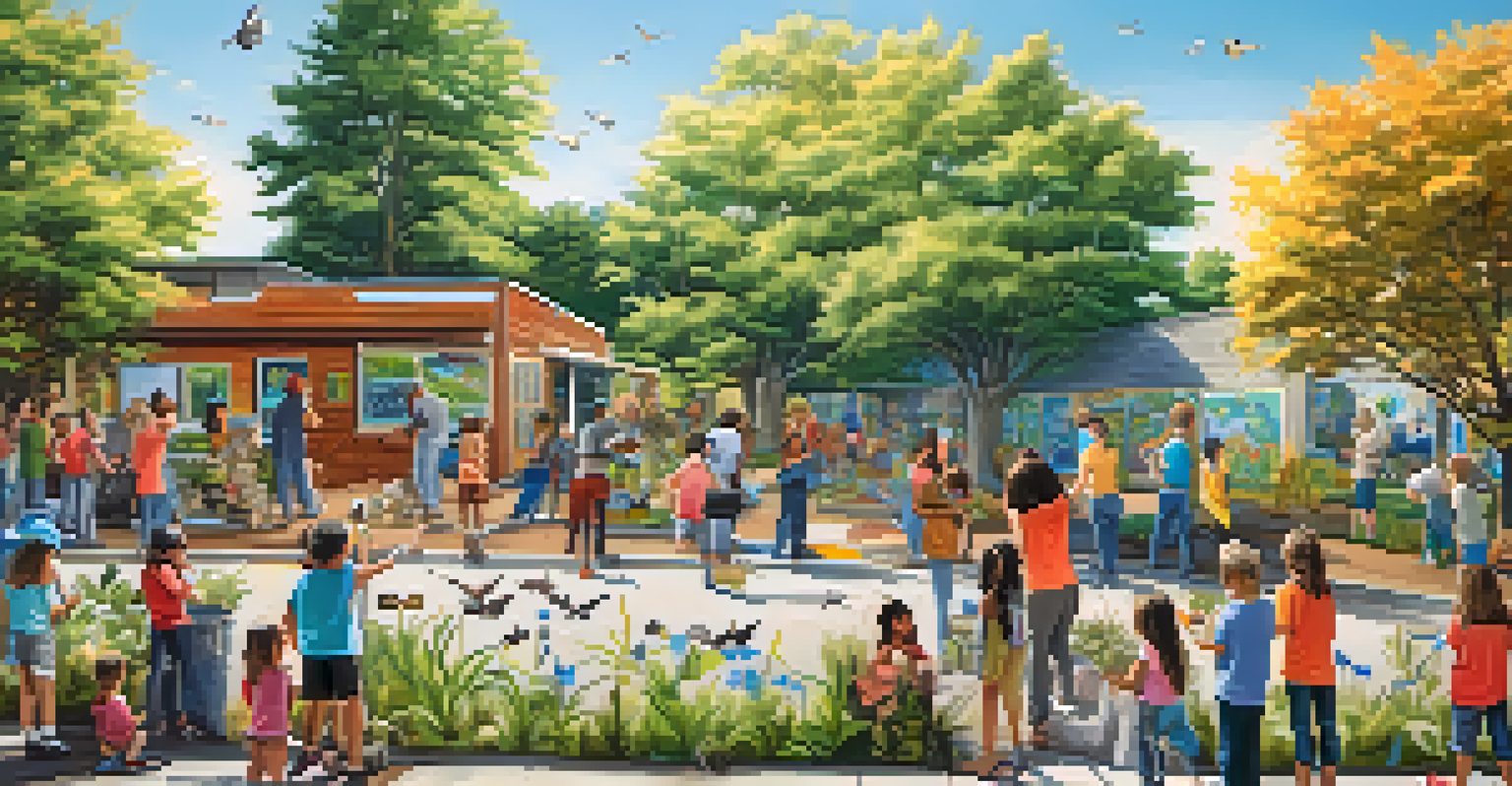The Relationship Between Art and Environmental Education

Understanding the Intersection of Art and Environment
Art and environmental education may seem like two separate domains, but they intersect in meaningful ways. Art can convey complex environmental issues, making them more relatable and easier to understand. Through various forms, such as painting, sculpture, and digital media, artists can capture the beauty and fragility of nature, prompting viewers to reflect on their relationship with the environment.
Art is not a mirror held up to reality, but a hammer with which to shape it.
This relationship is not only about aesthetics; it's about fostering a deeper connection with the planet. When individuals engage with art that highlights environmental themes, they often feel a sense of responsibility toward nature. This emotional connection can inspire action, whether through personal lifestyle changes or community initiatives aimed at conservation.
Moreover, art serves as a powerful tool for educators. By incorporating artistic projects into environmental curricula, teachers can encourage creativity while addressing critical issues like climate change and biodiversity loss. This approach not only enriches students' learning experiences but also empowers them to think critically about the world around them.
Art as a Medium for Environmental Awareness
Art has the unique ability to communicate messages that resonate on an emotional level, making it an effective medium for raising environmental awareness. For instance, large-scale installations, like those by artist Christo and Jeanne-Claude, can draw attention to specific landscapes and the threats they face. These captivating works often spark conversations and inspire viewers to engage with environmental issues more actively.

Furthermore, community art projects can harness local voices and experiences to address environmental concerns. For example, mural projects depicting local wildlife or ecosystems not only beautify neighborhoods but also educate residents about the importance of preserving these natural treasures. This participatory approach fosters a sense of community ownership and responsibility for local environmental health.
Art Enhances Environmental Awareness
Art serves as a powerful medium to convey complex environmental issues, inspiring individuals to connect emotionally and take action.
Incorporating art into environmental campaigns can also amplify their impact. Social media platforms have provided a space for artists to share their work and messages widely, reaching audiences that traditional methods might miss. Powerful visuals can go viral, spreading awareness and prompting discussions that lead to tangible action.
The Role of Eco-Art in Sustainability
Eco-art is a specific genre that focuses on environmental themes and sustainability, often using recycled or natural materials. Artists who work in this genre aim to raise awareness about ecological issues while also promoting sustainable practices. For example, pieces made from plastic waste not only highlight pollution but also encourage viewers to rethink their consumption habits.
The Earth does not belong to us. We belong to the Earth.
This form of art goes beyond mere representation; it invites audiences to participate in the conversation about sustainability. Artists often engage communities in the creation process, fostering a collaborative spirit that bridges the gap between art and activism. By working together, participants can develop solutions to local environmental challenges, making the artwork a catalyst for change.
Additionally, eco-art creates a platform for dialogue about sustainability and climate change. Exhibitions dedicated to this genre can draw attention to pressing issues while showcasing innovative approaches to problem-solving. As viewers interact with eco-art, they are often inspired to take action in their own lives, creating a ripple effect of positive change.
Integrating Art into Environmental Education Curricula
Incorporating art into environmental education curricula can enhance student engagement and understanding. By using creative projects, educators can make complex scientific concepts more accessible and relatable. For instance, students might create posters or sculptures that represent local ecosystems, allowing them to explore biodiversity while expressing their creativity.
Hands-on art activities can also foster teamwork and collaboration among students. Working together on projects encourages communication and helps develop problem-solving skills, all while deepening their understanding of environmental issues. This collaborative aspect not only enriches the learning experience but also instills a sense of community responsibility.
Eco-Art Promotes Sustainability
Eco-art utilizes recycled materials to raise awareness about ecological issues and encourages community engagement in sustainability efforts.
Moreover, when students see the real-world applications of their art, they are more likely to feel empowered to make a difference. By showcasing their work in local galleries or community events, students can share their insights and inspire others to take action. This integration of art and education creates a dynamic learning environment that promotes both creativity and environmental stewardship.
Case Studies: Successful Art-Environment Collaborations
Several successful collaborations between artists and environmental organizations illustrate the potential of art in fostering ecological awareness. One notable example is the 'Ocean Park' project, where artists created large-scale murals to raise awareness about marine conservation. These vibrant artworks not only beautified the area but also educated the public about the importance of protecting marine ecosystems.
Another inspiring case is the 'Trash Island' installation, which used discarded materials to create a floating art piece that represents the impact of ocean pollution. This project drew significant media attention, highlighting the issue of plastic waste in our oceans and inspiring local communities to participate in cleanup efforts. Such initiatives demonstrate how art can mobilize individuals and communities toward environmental action.
These case studies serve as powerful reminders of art's ability to engage and inspire. By capturing the imagination of audiences, artists can spark conversations about critical environmental issues, encouraging people to take action and advocate for the planet. The successful melding of art and environmentalism showcases the potential for creative solutions in addressing our most pressing challenges.
Art Festivals: Celebrating Creativity and Sustainability
Art festivals dedicated to environmental themes provide a vibrant platform for artists and activists to connect. These events often feature workshops, installations, and performances that inspire attendees to think critically about their environmental impact. By immersing visitors in creative expressions of sustainability, festivals can leave a lasting impression and motivate individuals to adopt eco-friendly practices.
For instance, festivals like the 'Eco Art Fest' not only showcase local artists but also include discussions on environmental issues, allowing for a rich exchange of ideas. Attendees can learn about sustainable living while enjoying art that reflects their community's unique relationship with nature. This blend of education and entertainment fosters a deeper appreciation for both art and the environment.
Integration in Education Boosts Engagement
Incorporating art into environmental education fosters creativity and collaboration, empowering students to understand and advocate for ecological responsibility.
Moreover, art festivals often promote collaboration between artists, educators, and environmental organizations. By working together, these groups can amplify their messages and create a more significant impact on public awareness. As more people engage with these events, the potential for collective action and change grows, demonstrating the power of art in shaping a sustainable future.
The Future of Art and Environmental Education
The relationship between art and environmental education is evolving, with new technologies and platforms expanding possibilities for engagement. Digital art and virtual reality experiences can create immersive environments that allow audiences to explore ecological issues in innovative ways. This shift opens up opportunities for educators to reach younger generations who are increasingly tech-savvy.
As climate change continues to pose challenges, the role of art in environmental education will likely become even more critical. Artists can serve as storytellers, using their work to highlight the urgency of environmental issues and inspire collective action. By combining creativity with advocacy, the art community can play a vital role in shaping public discourse around sustainability.

Ultimately, the future of this relationship hinges on collaboration and community involvement. By fostering partnerships between artists, educators, and environmentalists, we can create a more informed and engaged society. Together, we can harness the power of art to raise awareness, inspire action, and cultivate a deeper connection to our planet.